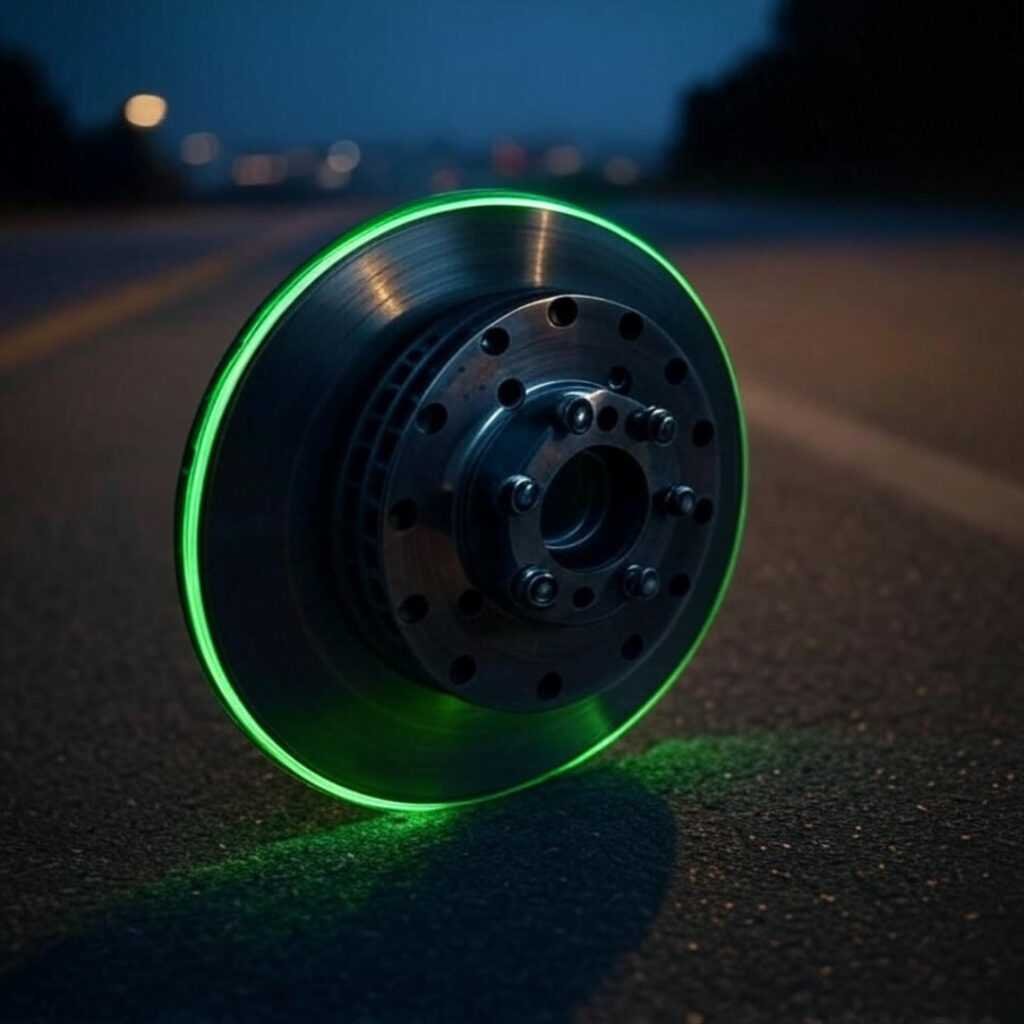Motorsports innovations are, like, the secret ingredient in my janky 2013 sedan I’m still driving around Ohio. I’m sitting in my messy apartment, the smell of burnt Pop-Tarts—don’t ask, my toaster’s trash—hanging in the air, and I’m geeking out over how my car, Betsy (yeah, I named her), owes so much to those screaming Formula 1 cars I watch on my cracked phone screen. I’m not a car dude, alright? I once locked my keys in Betsy at a gas station and had to call my mom for help. Embarrassing. But realizing my clunker’s got racetrack DNA? That’s got me hyped. Let’s dive in, because I’m weirdly into this and maybe a little ashamed of how much I care.
F1 Brakes That Saved My Dumb Butt
Okay, so last week I almost ate it. I’m driving back from a late-night Taco Bell run—those chalupas hit different at 1 a.m.—and some dude in a massive truck cuts me off on I-77. I slam the brakes, heart pounding like I’m in a bad action flick, and Betsy stops like she’s got superpowers. No crash, just me sweating through my stained hoodie. That’s motorsports innovations for you—Formula 1’s carbon-ceramic brakes trickled down to my sedan’s cheapo ABS system. I read somewhere on Car and Driver that F1’s crazy braking tech made ABS better for normies like me. I’m not out here racing, but knowing my brakes have F1 roots makes me feel, like, 5% less like a loser.

Hybrid Engines: From Racetracks to My Costco Runs
Here’s a cringey confession: I had to replace Betsy’s hybrid battery last year, and I legit had a mini meltdown over the $2,000 bill. I’m sitting in my car, smelling like stale coffee and regret, when I learn motorsports innovations are why Betsy’s even got a hybrid system. Formula 1 has been using Energy Recovery Systems (ERS) since, like, forever—okay, 2009—grabbing energy from brakes and heat for extra juice. I saw it on Motorsport.com, and it blew my mind. So when I’m crawling through traffic to Costco, Betsy’s sipping gas like a champ, and I’m feeling smug even if my car’s floor is a graveyard of empty chip bags.
Why I’m Kinda Jealous of F1 Engineers
Here’s where I messed up: I tried watching a YouTube video on hybrid engines, and my brain checked out after 90 seconds. I’m sprawled on my lumpy couch, surrounded by crumpled LaCroix cans, thinking I could’ve been an engineer if I hadn’t flunked math in 10th grade. Motorsports innovations like ERS are way over my head, but they make my life easier without me needing to understand the nerdy bits. My car’s half F1, half soccer-mom vibes, and I’m cackling at how absurd that is.

Aerodynamics: Making Betsy Less of a Boxy Mess
Aerodynamics, man, this is where I get way too excited. I was at a car wash last weekend, watching soap drip off Betsy’s hood, and I started thinking about how her ugly, boxy self still has motorsports innovations. F1 teams are obsessed with drag and downforce, and some of that shapes my sedan. Autocar says racing aero—like spoilers and diffusers—helps regular cars save gas and stay stable. Betsy’s got a dinky spoiler that makes me feel like I’m in a Fast & Furious movie when I’m just picking up pizza.
My Super Cringey Spoiler Phase
True story: I once spent an hour in an AutoZone parking lot Googling “cheap spoilers” because I thought it’d make Betsy faster. Yeah, I’m an idiot. Spoiler alert (ha, get it?): it didn’t do jack. I’m sitting here now, staring out my window at my neighbor’s dog chewing on my trash can, laughing at how I thought a $30 spoiler would make me a racecar driver. Motorsports innovations are sneaky, like how Betsy’s side mirrors are shaped to cut drag. They make my commute smoother, even if I’m just dodging Ohio potholes.

Safety Tech: Racing Keeps Me From Totally Screwing Up
I’m going to be real—I’m a terrible driver. I’ve had three fender-benders this year, all my fault, and I’m still dying inside about the time I backed into a mailbox while screaming along to Lizzo. But motorsports innovations in safety? They’re my saving grace. Reinforced chassis and crumple zones started in racing to keep drivers alive at 200 mph. Popular Mechanics says F1’s crash tests made my car safer. Every time I botch a parallel park, I’m thankful for that racing tech keeping me in one piece.
My Absolute Worst Driving Fail
Last month, I tried to “drift” into a parking spot at Target—don’t judge, I was feeling myself—and I scraped my bumper so bad I wanted to disappear. Sitting there, face burning, I realized my car’s frame and airbags, inspired by motorsports innovations, saved me from a bigger mess. I’m not proud, and my insurance agent definitely hates me now. I may have cried a little while filing the claim.
Wrapping Up This Hot Mess of a Ride
So, yeah, I’m just a guy in Ohio, sipping gross coffee, driving a car that’s one pothole away from giving up, but motorsports innovations make my life way better. From brakes that save my Taco Bell runs to hybrid tech that saves gas, racing is all over my daily drive. I’m no expert—just a dude who’s made too many dumb car decisions—but I love how this tech ties my boring life to the racetrack. Got a car? Notice any racing tech in it? Drop a comment—I’m dying to hear your stories. And, uh, maybe don’t try drifting at Target, ‘kay?









































